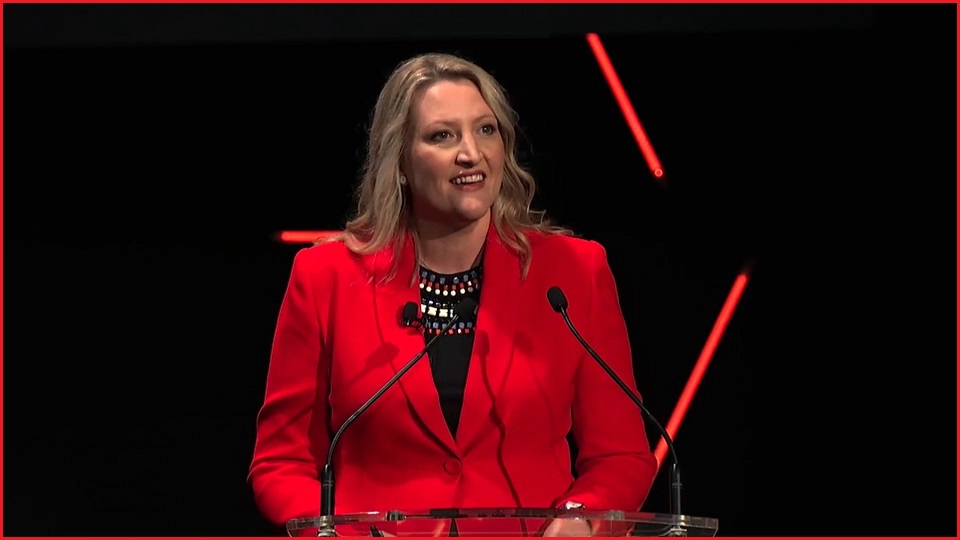Mobile phones will not exist in ten years’ time, a data scientist and futurist has predicted in calling out the breakneck pace of the “absolutely game-changing” Industry 5.0 paradigm that she called “not the Internet of Things, but the Internet of Bodies”.
“Lots of people are talking about the new normal, but the new normal in the world of emerging technologies is every week,” Dr Catherine Ball, a data scientist and systems engineer at Australian National University, said in a keynote to the ADMA Global Forum.
“We are now working with exponential and bleeding-edge technologies that are moving so fast that we don’t even have the words to describe what they actually mean.”
As distinct from Industry 4.0 – an industrial paradigm built around the idea of highly-connected, self-monitoring and self-optimising production processes that lean heavily on IoT sensors – Industry 5.0 will be based on convergence of data and human-centric technologies that will dramatically change the way people interact with services, with the world around them, and each other.
Noting that ANU scientists have already produced mobile phones as thin as a piece of paper, Ball said today’s human-focused technology was rapidly being subsumed into wearable and implantable devices that would make phones as standalone devices redundant.
Innovations such as the smart contact lens – conceptualised by Google in 2013 and recently demonstrated by South Korean researchers – will allow people to “project what we want to see, not what is,” Ball said.
Rather than using smart mirrors to virtually try on clothes and accessories, for example, an Industry 5.0 approach would see a composite image projected directly onto the wearer’s contact lens – or, as is being increasingly discussed, directly into a digital metaverse where responsive avatars can interact with highly detailed simulacra of real-world or imaginary spaces.

Dr Catherine Ball speaking at the ADMA Global Forum 2022. Photo: Supplied
Those digital environments aren’t just about marketing, however: with increasingly detailed digital twins becoming commonplace, metaverse interaction will allow people to interact with real-world systems in new ways.
Large-scale digital twins of a country like Vanuatu, Ball said, would even allow weather scientists and emergency-response specialists to simulate the impact of different extreme weather scenarios.
“It’s about convergent technologies,” Ball explained. “It’s about how the future is more than the sum of the parts – and before we even start talking about the metaverse, how we’re going into a space where data is being produced and consumed in ways that we have never done it before.”
Get data right before it does you wrong
Yet for all the promise of Industry 5.0, the burden of collecting, managing, and utilising the data was posing new challenges as brands consider how to re-engage with consumers that are retraining themselves for life in the “post-plague economy”.
“We’re at a tipping point,” Ball said, warning marketers that trust will be crucial in rebuilding those relationships – and that laying down a coherent and effective data management strategy is critical to achieving that trust.
“In the last two years we’ve connected online in ways that we’ve never connected before physically,” she said, “so how do you maintain those relationships and maintain those personal trusts?”
“This isn’t about just shoving ads at people,” she continued. “This is actually working how we are as individuals going to be, as a human concept, producing data that you might be collecting, but also consuming data that you might be producing.”
“We’re going from technology and device-led conversations to social function and social license – and ethically driven ways of working.”
Use of data for the common good – for example, in better understanding natural disasters like the current Lismore floods, or modelling bushfires to better manage outcomes and minimise human impact – will be a key output of Industry 5.0, Ball said.
Yet faced with “data tsunamis” from the sheer volume of multi-modal, multi-platform data now being collected and used, she added, companies needed to consider practical issues – for example, whether they should invest in sovereign data capabilities and how they can ensure that their use of AI respects ethical and moral norms.

I wonder how this coat would look on me? Photo: Dr Catherine Ball
It's not AI, it’s IA
Even the term ‘AI’ had become overused, Ball said, suggesting that a better term might be ‘IA’ – for intelligence augmentation.
“AI is not actually that clever,” she explained. “Somebody put together an algorithm and it’s collecting data and spewing out this answer for me.”
Efforts around explainable AI, she said, were bringing much-needed transparency to the operation of AI, and every marketing organisation should have a working group looking into the issue – particularly given that, she predicted, legislation will eventually force Australian companies to open up their algorithms to scrutiny.
Experimentation will drive evolution as businesses and consumers navigate the new world’s possibilities and risks.
“We are extrapolating and accelerating technologies from the geek to the chic, and the balance between those two things is industry 5.0,” Ball said, advising companies to tread carefully and avoid losing the human element.
“We’re entering the uncanny valley here,” she said, “where things are right but not quite right and we’re never quite sure – and this is why the technology should never be the first conversation.
“The data you collect should never be the first conversation. ‘The reason why’ should be the first conversation – and then the ‘how’ comes and finds itself later.”










